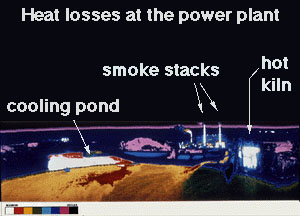ExploraTour: A Peek into the Lives of the Stars
Evolution of High Mass Stars
STAGE 4b: Black Hole
If the central core, that remains after the supernova blast, is greater than 3 times the sun's mass, the internal pressure cannot halt the gravitational collapse. The core will continue to collapse to form a black hole.
There is so much mass compressed into such a small volume that gravity prevents even light from escaping the black hole. Since no light can ever reach your eyes from the collapsed core, it appears black, hence the name.
The apparent surface of the black hole is the radius at which light just manages to escape. It is called the event horizon.
The size of the event horizon depends only on the mass of the collapsed core, for a non-spinning black hole, and is given by the simple expression: Black Hole Circumference (km) = 18.5 * mass where the mass is given in units of the solar mass.
For example, a black hole with 3 times the solar mass would have a circumference of 55.5 kilometers (about the size of a town). The Earth as a black hole would only be a couple of centimeters in diameter (about the size of a marble)!












